Aquafaba vs Egg White (Pros and Cons + Uses in Cooking!)
Jan 24, 2024
Aquafaba vs egg white: the pros, the cons, and everything you need to know about the nutrition differences and substitutions in recipes.
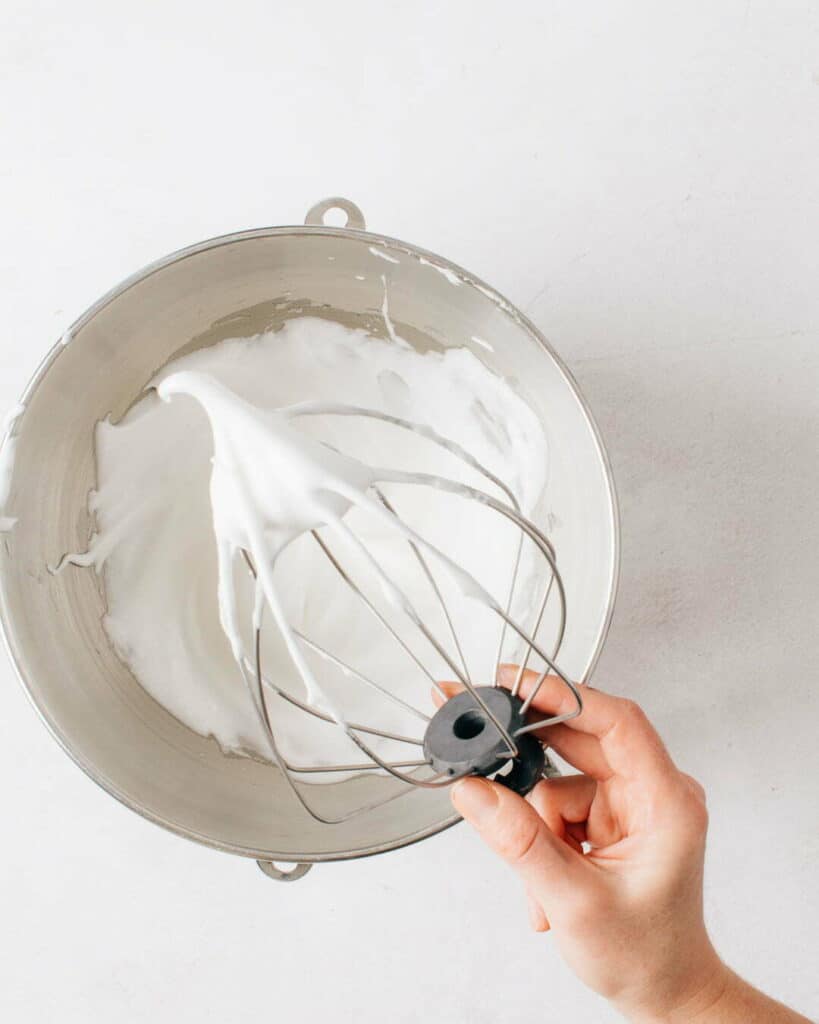
Aquafaba vs. Egg White: At a Glance
- Ideal for creating light and airy textures in recipes like meringues and soufflés.
- Acts as a binding and leavening agent in various dishes, from desserts to meat dishes.
- Their protein content contributes to the structure and stability in recipes.
I use aquafaba frequently as an egg substitute and always amazed by its magic. Read on for a deeper dive into what it’s good for and what it’s not.
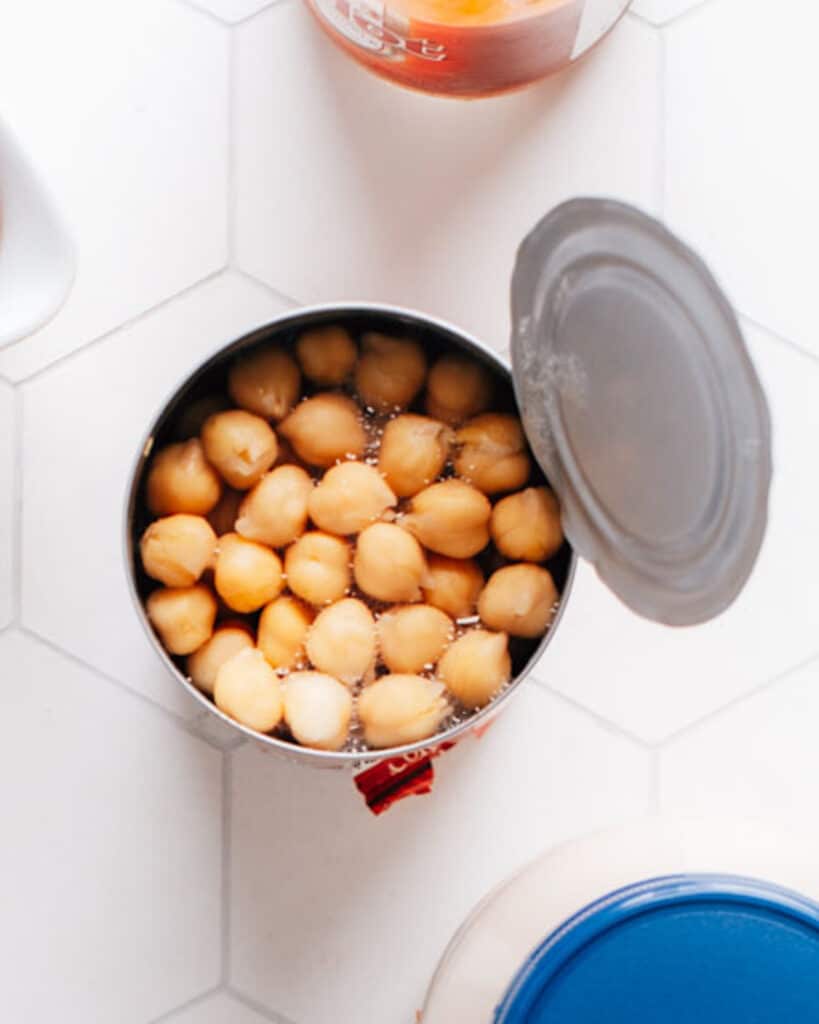
What is Aquafaba?
Aquafaba, known as “bean water,” is a liquid leftover from cooking beans or found in canned/boxed beans and legumes. It’s popular as an egg white substitute, especially in vegan cooking.
Aquafaba from chickpeas is found to be most effective in recipes. Nutritionally, it is low in calories, with about 3 to 5 calories per tablespoon, and consists of about 95% liquid. The remaining 5% is primarily composed of carbohydrates and protein, but the amounts of macro- and micronutrients are minimal.
This makes it a low-calorie alternative to egg whites in cooking, although it’s not as nutrient-dense.
Definition and Origin Aquafaba is a relatively new culinary innovation, primarily popular in vegan cooking. The term “Aquafaba” was coined in 2015 and combines the Latin words for water (aqua) and bean (faba). It refers to the viscous water in which legume seeds, such as chickpeas, have been cooked. This liquid has unique properties that mimic those of egg whites, making it a popular egg substitute.
How It’s Made and Common Sources Aquafaba is typically obtained from canned chickpeas. When chickpeas are cooked, the proteins and carbohydrates leach into the water, creating a liquid that has a similar consistency to that of raw egg whites. It can also be made at home by soaking and boiling dried chickpeas and retaining the cooking water.
Is Aquafaba Healthy?
Nutritionally, Aquafaba is low in calories. Unlike egg whites, which are high in protein, Aquafaba contains minimal protein. Its primary components are carbohydrates, with a small amount of minerals, vitamins, and plant compounds leached from the legumes. However, its low protein content doesn’t hinder its ability to mimic egg whites in recipes, as its functionality is attributed to its unique mix of starches and saponins.
Aquafaba’s appeal lies not in its nutritional value but in its versatility as a culinary ingredient, especially for those following a vegan diet or with egg allergies. It has revolutionized vegan baking by providing a plant-based alternative for recipes that traditionally rely on egg whites.
- Aquafaba is low in calories, with about 3-5 calories per tablespoon.
- It contains a very small amount of protein, less than 1 gram per serving.
- The fat content in Aquafaba is nearly negligible.
- In terms of vitamins and minerals, Aquafaba has little to none.
- Carbohydrates in Aquafaba are also minimal.
Comparatively, egg whites are higher in protein, about 10% per serving, and also have significant nutritional value in terms of vitamins and minerals. Egg whites are also low in calories but higher than Aquafaba, with more substantial contributions to dietary protein.
In terms of culinary uses, both Aquafaba and egg whites are versatile and can be used in various recipes. Aquafaba is particularly beneficial for vegan diets as it can mimic the properties of egg whites, making it suitable for baking and cooking where eggs are typically used.
Remember, while Aquafaba is an excellent plant-based substitute for eggs, it does not match the nutritional profile of egg whites, particularly in protein content. Therefore, it’s more about the functionality in recipes rather than the nutritional contribution when using Aquafaba.
These findings highlight Aquafaba as a valuable ingredient for those following vegan diets or with egg allergies, offering a low-calorie and low-protein alternative for traditional egg-based recipes.
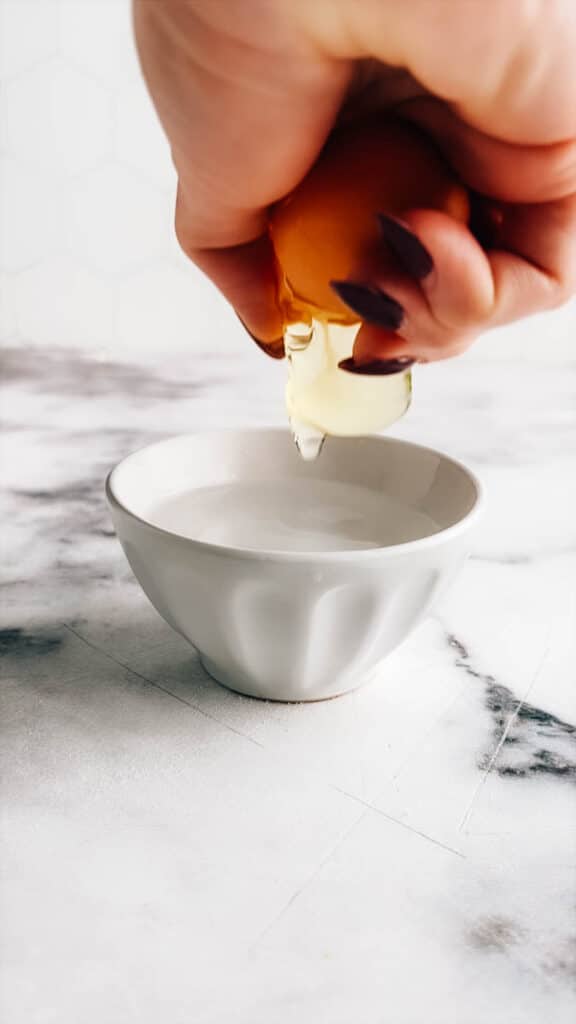
Understanding Egg Whites
Egg whites are the clear, viscous liquid that surrounds the yolk of an egg. In cooking, they play a vital role due to their ability to form foams, which is crucial for the structure and texture in many recipes.
Egg White Nutrition
Nutritionally, egg whites are high in protein and low in calories, with no fat or cholesterol, making them a popular choice for health-conscious diets. They contain about 3.6 grams of protein per white, with only 17 calories.
Common uses in recipes include meringues, angel food cakes, and as a leavening agent in various baked goods. Their ability to bind ingredients together also makes them useful in cooking and baking.
Read more here: Egg Whites Vs Yolk: The Facts You Should Know

Aquafaba Egg Substitute: Is it Good?
Pros
Aquafaba is quite amazing in cooking and baking, providing moisture, leavening and and binding without altering flavor.
It works well in recipes where egg whites are primarily used for their foaming properties. It’s effective in vegan meringues, mousses, and marshmallows. It can be whipped to create a light, airy texture. You can even make incredible aquafaba cocktails, instead of using an egg white foam. Hello, vegan whiskey sour.
Cons
Aquafaba may not be as effective in recipes where the high protein content of egg whites is crucial, such as in some types of custards or protein-rich baked goods, where egg whites contribute significantly to the structure.
When used as a substitute in cakes, cookies, and waffles, Aquafaba can alter the texture slightly. It tends to create a slightly more moist and less fluffy texture compared to egg whites. The lack of protein in Aquafaba means it doesn’t firm up the same way egg whites do upon cooking, which can affect the structure and rise of baked goods.
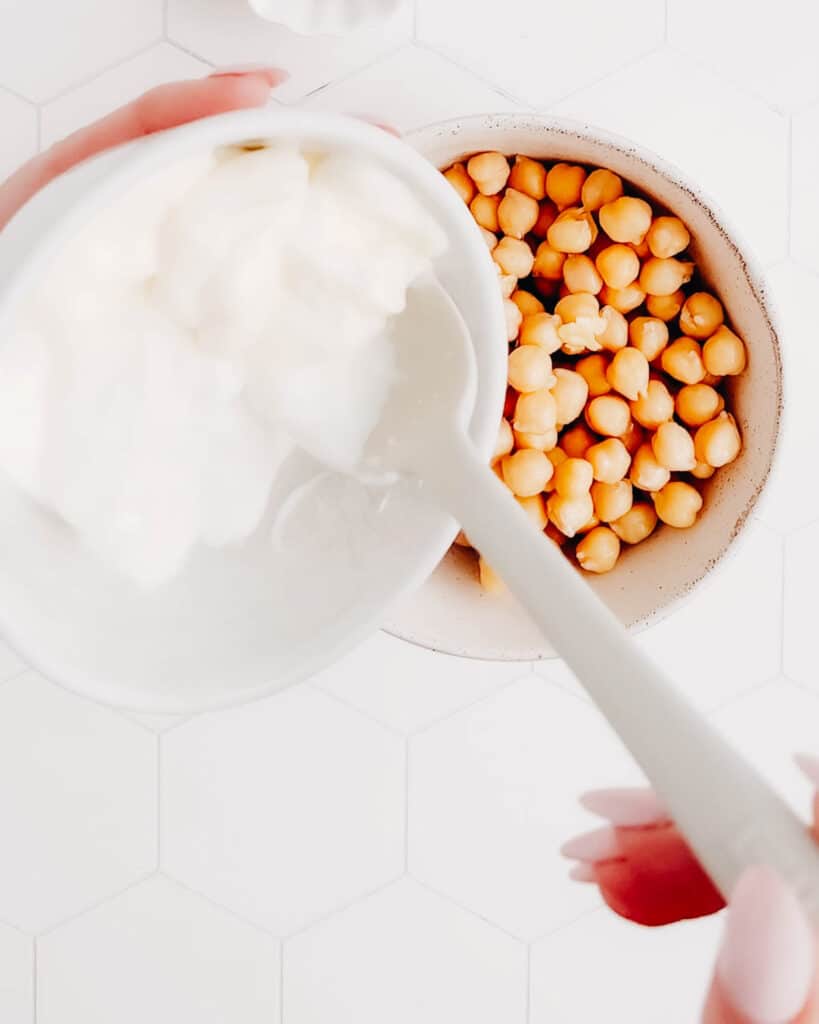
How to Make Vegan Aquafaba
Making Aquafaba
- From Canned Chickpeas: The simplest way to obtain Aquafaba is from canned chickpeas. Simply drain the liquid from a can of chickpeas into a bowl. This chickpea liquid is your Aquafaba.
- From Dried Chickpeas: Soak dried chickpeas in water overnight. Strain the soaking water and add fresh water for cooking. After cooking the chickpeas, the leftover chickpea water can be used as Aquafaba.
Tip:
- If using canned chickpeas, opt for low-sodium or no-salt-added varieties to control the salt taste in your Aquafaba.
How to Use Aquafaba in Recipes
As an Egg Replacement, 2 tablespoons of Aquafaba is equivalent to one egg white. Use 3 tablespoons of Aquafaba to substitute for one whole egg, including the egg yolk. Here are some common ways to use it:
- In Baking: Aquafaba can replace eggs in cakes, muffins, cookies, and brownies. It adds moisture and acts as a binder.
- Making Vegan Mayonnaise: Whisk Aquafaba with vinegar, mustard, and slowly drizzle in oil while blending to create a vegan mayo.
- For Creamy Sauces and Dressings: Aquafaba can emulsify ingredients, making it useful for vegan versions of creamy dressings and sauces.
- In Savory Dishes: Use Aquafaba as a binder in place of egg to make eggless or vegan meatballs or burgers.
- Aquafaba Meringues: Whip aquafaba with a hand mixer or stand mixer until it forms stiff peaks, just like egg whites. You can use this method as well to make chocolate mousse.
- Foams for Cocktails: Be a vegan bartender! Add aquafaba to a shaker and shake it until frothy and spoon over your favorite cocktails for a luxurious finish.
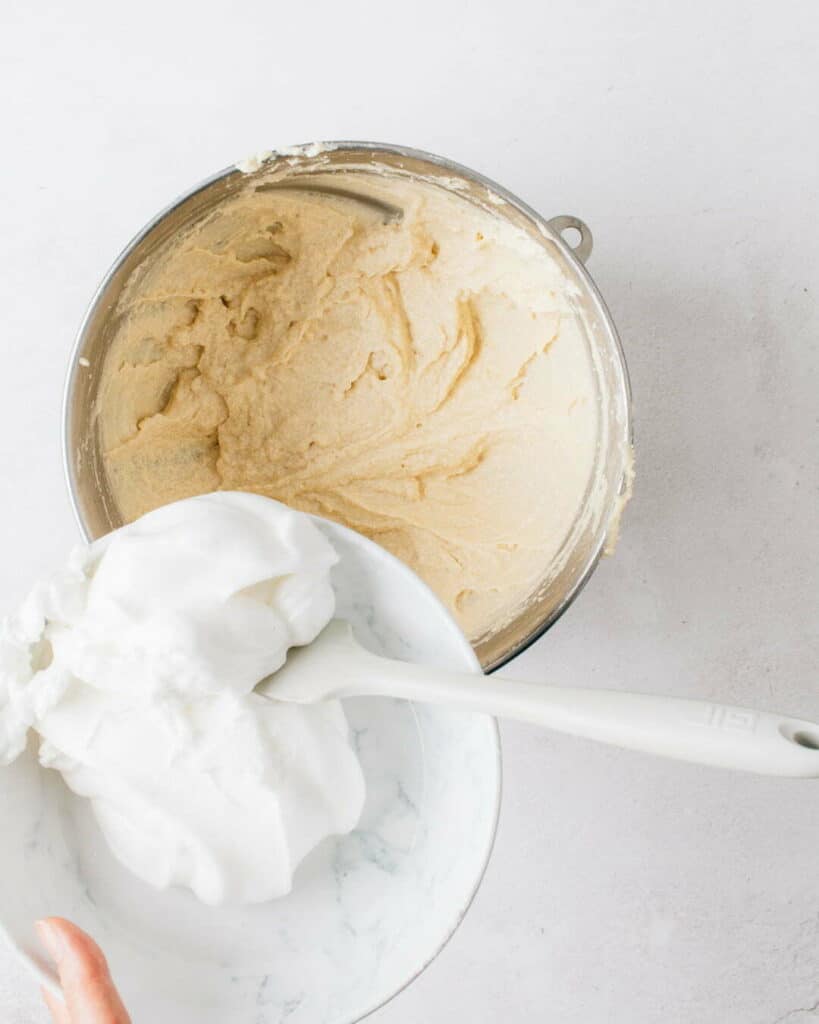
Bottom Line: Aquafaba vs Egg White
In summary, Aquafaba is great for vegans and those avoiding eggs.
It’s good in cocktails, sauces, and baking, but low in protein.
Egg whites are protein-rich and key in recipes needing structure. Knowing their uses helps you pick the right one based on your diet and what you’re cooking. Both Aquafaba and egg whites offer their own benefits in the kitchen.
Sources
International Food Information Council
USDA National Nutrient Database
Next reading: The Best Substitutes for Eggs In Any Recipe
Egg Recipes to Try
- 23+ Breakfast Recipes with Sausage and Eggs
- Can you boil eggs in the microwave?
- Poached Egg in Microwave
- Easy Mini Quiche Recipe
- Tater Tot Breakfast Casserole
I’m a food scientist and I love to nerd out about aquafaba and egg whites. I’ll dive deep, but here’s a high-level overview of what sets them apart.
Aquafaba vs. Egg White: Nutrition
Aquafaba:
- Role: A vegan substitute for egg whites.
- Nutritional Content: It’s low in calories, about 3-5 per tablespoon, with minimal protein and micronutrients.
Egg Whites:
- Role: Commonly used for their high protein content.
- Nutritional Content: High in protein, about 3.6 grams per white, low in calories (about 17 per white), and contains no fat but essential vitamins and minerals.
Aquafaba vs. Egg White: Use in Cooking
Aquafaba:
- Great for whipping into foams like in meringues and mousses.
- Versatile in baking and in savory dishes where binding is needed.
- Lacks the protein structure of egg whites but is useful for adding volume and lightness.
Egg Whites:
- Ideal for creating light and airy textures in recipes like meringues and soufflés.
- Acts as a binding and leavening agent in various dishes, from desserts to meat dishes.
- Their protein content contributes to the structure and stability in recipes.
I use aquafaba frequently as an egg substitute and always amazed by its magic. Read on for a deeper dive into what it’s good for and what it’s not.

What is Aquafaba?
Aquafaba, known as “bean water,” is a liquid leftover from cooking beans or found in canned/boxed beans and legumes. It’s popular as an egg white substitute, especially in vegan cooking.
Aquafaba from chickpeas is found to be most effective in recipes. Nutritionally, it is low in calories, with about 3 to 5 calories per tablespoon, and consists of about 95% liquid. The remaining 5% is primarily composed of carbohydrates and protein, but the amounts of macro- and micronutrients are minimal.
This makes it a low-calorie alternative to egg whites in cooking, although it’s not as nutrient-dense.
Definition and Origin Aquafaba is a relatively new culinary innovation, primarily popular in vegan cooking. The term “Aquafaba” was coined in 2015 and combines the Latin words for water (aqua) and bean (faba). It refers to the viscous water in which legume seeds, such as chickpeas, have been cooked. This liquid has unique properties that mimic those of egg whites, making it a popular egg substitute.
How It’s Made and Common Sources Aquafaba is typically obtained from canned chickpeas. When chickpeas are cooked, the proteins and carbohydrates leach into the water, creating a liquid that has a similar consistency to that of raw egg whites. It can also be made at home by soaking and boiling dried chickpeas and retaining the cooking water.
Is Aquafaba Healthy?
Nutritionally, Aquafaba is low in calories. Unlike egg whites, which are high in protein, Aquafaba contains minimal protein. Its primary components are carbohydrates, with a small amount of minerals, vitamins, and plant compounds leached from the legumes. However, its low protein content doesn’t hinder its ability to mimic egg whites in recipes, as its functionality is attributed to its unique mix of starches and saponins.
Aquafaba’s appeal lies not in its nutritional value but in its versatility as a culinary ingredient, especially for those following a vegan diet or with egg allergies. It has revolutionized vegan baking by providing a plant-based alternative for recipes that traditionally rely on egg whites.
- Aquafaba is low in calories, with about 3-5 calories per tablespoon.
- It contains a very small amount of protein, less than 1 gram per serving.
- The fat content in Aquafaba is nearly negligible.
- In terms of vitamins and minerals, Aquafaba has little to none.
- Carbohydrates in Aquafaba are also minimal.
Comparatively, egg whites are higher in protein, about 10% per serving, and also have significant nutritional value in terms of vitamins and minerals. Egg whites are also low in calories but higher than Aquafaba, with more substantial contributions to dietary protein.
In terms of culinary uses, both Aquafaba and egg whites are versatile and can be used in various recipes. Aquafaba is particularly beneficial for vegan diets as it can mimic the properties of egg whites, making it suitable for baking and cooking where eggs are typically used.
Remember, while Aquafaba is an excellent plant-based substitute for eggs, it does not match the nutritional profile of egg whites, particularly in protein content. Therefore, it’s more about the functionality in recipes rather than the nutritional contribution when using Aquafaba.
These findings highlight Aquafaba as a valuable ingredient for those following vegan diets or with egg allergies, offering a low-calorie and low-protein alternative for traditional egg-based recipes.

Understanding Egg Whites
Egg whites are the clear, viscous liquid that surrounds the yolk of an egg. In cooking, they play a vital role due to their ability to form foams, which is crucial for the structure and texture in many recipes.
Egg White Nutrition
Nutritionally, egg whites are high in protein and low in calories, with no fat or cholesterol, making them a popular choice for health-conscious diets. They contain about 3.6 grams of protein per white, with only 17 calories.
Common uses in recipes include meringues, angel food cakes, and as a leavening agent in various baked goods. Their ability to bind ingredients together also makes them useful in cooking and baking.
Read more here: Egg Whites Vs Yolk: The Facts You Should Know

Aquafaba Egg Substitute: Is it Good?
Pros
Aquafaba is quite amazing in cooking and baking, providing moisture, leavening and and binding without altering flavor.
It works well in recipes where egg whites are primarily used for their foaming properties. It’s effective in vegan meringues, mousses, and marshmallows. It can be whipped to create a light, airy texture. You can even make incredible aquafaba cocktails, instead of using an egg white foam. Hello, vegan whiskey sour.
Cons
Aquafaba may not be as effective in recipes where the high protein content of egg whites is crucial, such as in some types of custards or protein-rich baked goods, where egg whites contribute significantly to the structure.
When used as a substitute in cakes, cookies, and waffles, Aquafaba can alter the texture slightly. It tends to create a slightly more moist and less fluffy texture compared to egg whites. The lack of protein in Aquafaba means it doesn’t firm up the same way egg whites do upon cooking, which can affect the structure and rise of baked goods.

How to Make Vegan Aquafaba
Making Aquafaba
- From Canned Chickpeas: The simplest way to obtain Aquafaba is from canned chickpeas. Simply drain the liquid from a can of chickpeas into a bowl. This chickpea liquid is your Aquafaba.
- From Dried Chickpeas: Soak dried chickpeas in water overnight. Strain the soaking water and add fresh water for cooking. After cooking the chickpeas, the leftover chickpea water can be used as Aquafaba.
Tip:
- If using canned chickpeas, opt for low-sodium or no-salt-added varieties to control the salt taste in your Aquafaba.
How to Use Aquafaba in Recipes
As an Egg Replacement, 2 tablespoons of Aquafaba is equivalent to one egg white. Use 3 tablespoons of Aquafaba to substitute for one whole egg, including the egg yolk. Here are some common ways to use it:
- In Baking: Aquafaba can replace eggs in cakes, muffins, cookies, and brownies. It adds moisture and acts as a binder.
- Making Vegan Mayonnaise: Whisk Aquafaba with vinegar, mustard, and slowly drizzle in oil while blending to create a vegan mayo.
- For Creamy Sauces and Dressings: Aquafaba can emulsify ingredients, making it useful for vegan versions of creamy dressings and sauces.
- In Savory Dishes: Use Aquafaba as a binder in place of egg to make eggless or vegan meatballs or burgers.
- Aquafaba Meringues: Whip aquafaba with a hand mixer or stand mixer until it forms stiff peaks, just like egg whites. You can use this method as well to make chocolate mousse.
- Foams for Cocktails: Be a vegan bartender! Add aquafaba to a shaker and shake it until frothy and spoon over your favorite cocktails for a luxurious finish.

Bottom Line: Aquafaba vs Egg White
In summary, Aquafaba is great for vegans and those avoiding eggs.
It’s good in cocktails, sauces, and baking, but low in protein.
Egg whites are protein-rich and key in recipes needing structure. Knowing their uses helps you pick the right one based on your diet and what you’re cooking. Both Aquafaba and egg whites offer their own benefits in the kitchen.
Sources
International Food Information Council
USDA National Nutrient Database
Next reading: The Best Substitutes for Eggs In Any Recipe








